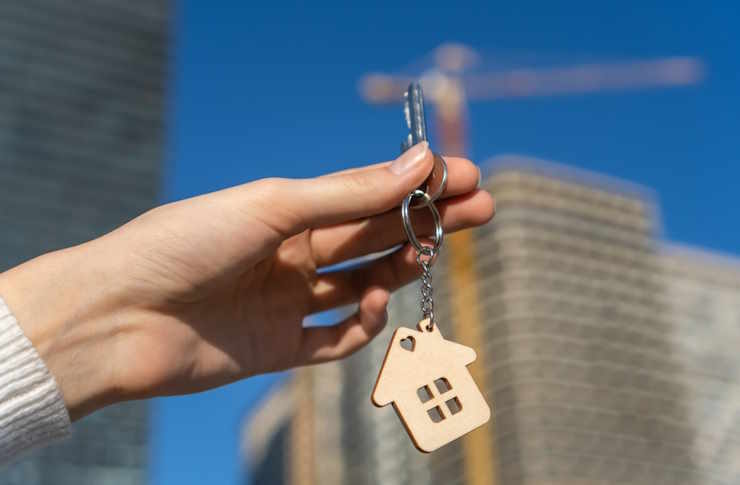Prefabricated Homes: A Modern, Affordable Housing Solution
Prefabricated homes—often called prefab homes—are transforming homebuilding by combining speed, sustainability, and cost savings. Built in controlled factories and assembled on-site, options like modular, manufactured, panelized, and kit homes deliver energy-efficient, customizable living spaces. Learn why homeowners and developers are choosing prefab for faster build times, consistent quality, and reduced waste, and what to consider before buying.

Prefabricated housing is redefining how we build homes. Rather than constructing everything on-site, many components are produced in a factory and then transported for assembly, which can speed up timelines, improve quality control, and lower costs. Understanding the varieties of prefab construction, the benefits they offer, and the trade-offs to weigh will help prospective buyers decide if this approach fits their needs.
Types of Prefab Homes
Prefab is an umbrella term that covers several distinct building methods. Each has particular advantages depending on budget, site conditions, and design preferences:
-
Modular homes: Built as discrete modules in a factory, these units are craned into place on a permanent foundation and joined together to form a finished residence. Because modules are constructed indoors, weather delays are minimized and quality is easier to control.
-
Manufactured homes: Often referred to as mobile homes, these units are built on a steel chassis and can be relocated. Manufactured homes follow federal building standards (such as the HUD code in the U.S.) and typically offer an economical path to homeownership.
-
Kit homes: These arrive as a package of pre-cut and labeled materials and components for on-site assembly. Kit homes appeal to owner-builders and contractors who want a more hands-on approach while still benefiting from factory precision.
-
Panelized homes: Wall panels, roof trusses, and floor sections are assembled at the factory and shipped to the lot. On-site crews fasten the panels together, accelerating construction while maintaining a high degree of fit-and-finish.
Advantages of Choosing a Prefab Home
Prefabricated construction brings several tangible benefits compared with traditional site-built houses:
-
Faster delivery: Because site work and building production often occur simultaneously, total project timelines can be significantly shorter—sometimes completed in months rather than seasons.
-
Predictable quality: Factory settings enable careful inspection and consistent workmanship, lowering the risk of defects caused by on-site weather or variable subcontractor performance.
-
Cost savings: Streamlined processes, bulk purchasing of materials, and reduced labor time on-site frequently translate to lower overall costs. For many buyers, prefab homes can be 10–25% less expensive than similar site-built properties.
-
Less waste: Precision cutting and repetition in factories reduce leftover materials and jobsite waste, making prefab a greener choice for resource management.
-
Energy efficiency: Many manufacturers incorporate high-performance insulation, efficient windows, and energy-conscious systems that lower long-term utility bills and environmental impact.
Customization and Durability
Prefab doesn’t mean one-size-fits-all. Most manufacturers offer multiple floor plans, finish packages, and upgrade options so homeowners can personalize layouts, cabinetry, exterior cladding, and finishes. Structural systems are engineered to meet local building codes, and when built and installed properly, prefab homes can match the durability and longevity of conventional construction. Ongoing maintenance and proper site preparation are essential for long-term performance, just as with traditional houses.
How Prefab Compares to Traditional Construction
Below is a concise comparison of common factors buyers consider when choosing between prefabricated and site-built homes.
| Aspect | Prefab Homes | Traditional Homes |
|---|---|---|
| Construction Time | Typically 4–6 months | Often 6–12 months or longer |
| Quality Control | High consistency due to factory setting | Can vary by site conditions and contractors |
| Customization | Increasingly flexible with modular options | Very high flexibility in design and finishes |
| Environmental Impact | Lower material waste and energy use | Tends to generate more waste and on-site energy use |
| Cost | Often 10–25% less expensive | Costs vary widely; often higher |
| Resale Value | Improving as market familiarity grows | Generally strong and well understood |
Prices, rates, or cost estimates mentioned are based on current data and may change. Independent research is advised before making financial decisions.
Key Considerations Before You Buy
Buying a prefab home involves distinct practicalities that are worth investigating ahead of time:
-
Zoning and building codes: Verify that your municipality permits the type of prefab you want and that the home will comply with local regulations and inspection requirements.
-
Land and site preparation: Costs for land purchase, grading, foundation work, utility connections, and driveways should be included in your budget. Site access is especially important for delivering large modules or panels.
-
Transportation and assembly: Transporting sections and on-site assembly require coordination and specialized equipment. Remote locations or narrow roads can increase logistical costs.
-
Financing and insurance: Some lenders and insurers have specific criteria for non-traditional homes; shop around to find favorable terms and understand appraisal standards for prefab construction.
-
Long-term maintenance and marketability: Research how prefab homes are perceived in your local resale market and consider upkeep needs related to the chosen materials and systems.
The Role of Prefab in Future Housing
Prefabricated housing is gaining momentum as builders and buyers prioritize speed, sustainability, and cost control. Advances in manufacturing, improved design options, and growing acceptance among lenders and appraisers are helping prefab homes become mainstream. For those who want a faster build, predictable quality, and a smaller environmental footprint, prefabricated options provide a compelling alternative to conventional construction.
By weighing the different prefab methods, understanding the trade-offs, and planning for site-specific needs, prospective homeowners can determine whether a prefabricated home aligns with their goals and budget. As the industry matures, prefab is likely to play an increasingly important role in meeting diverse housing needs worldwide.






